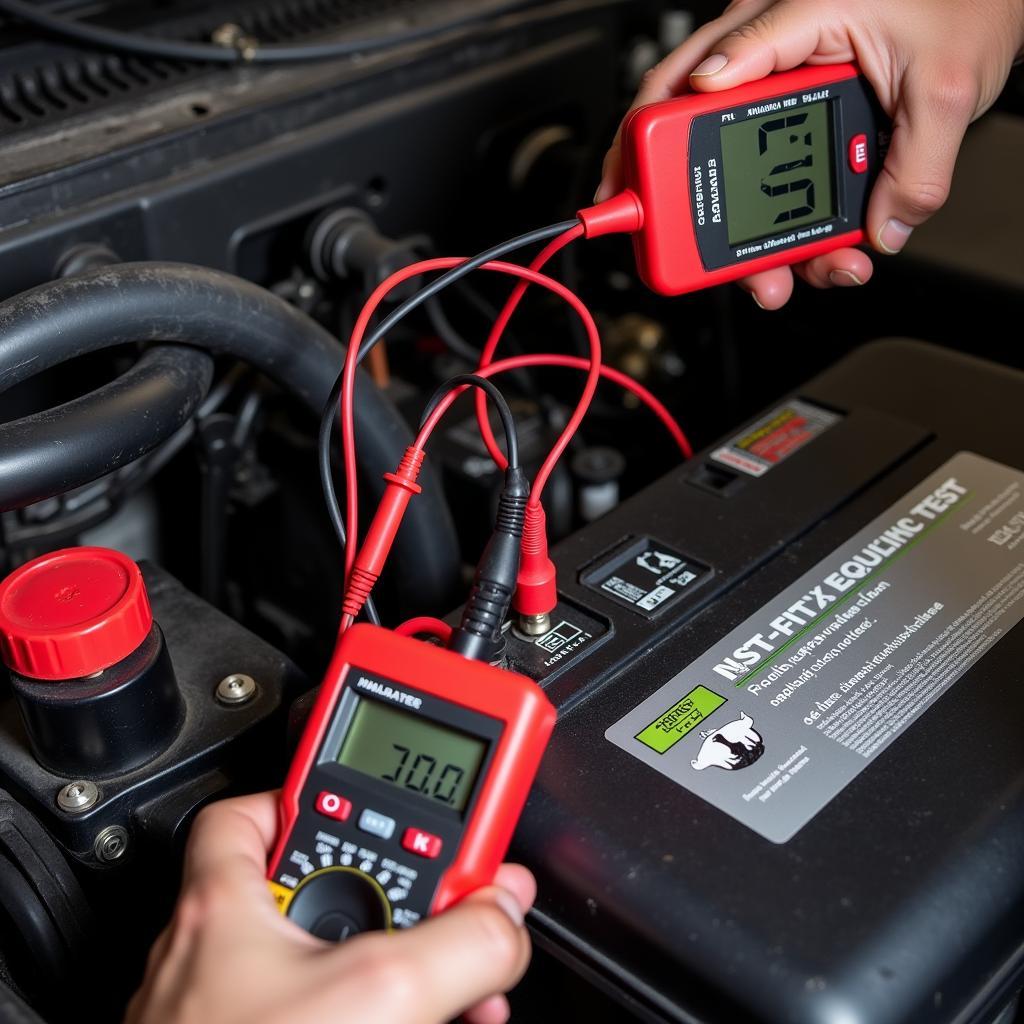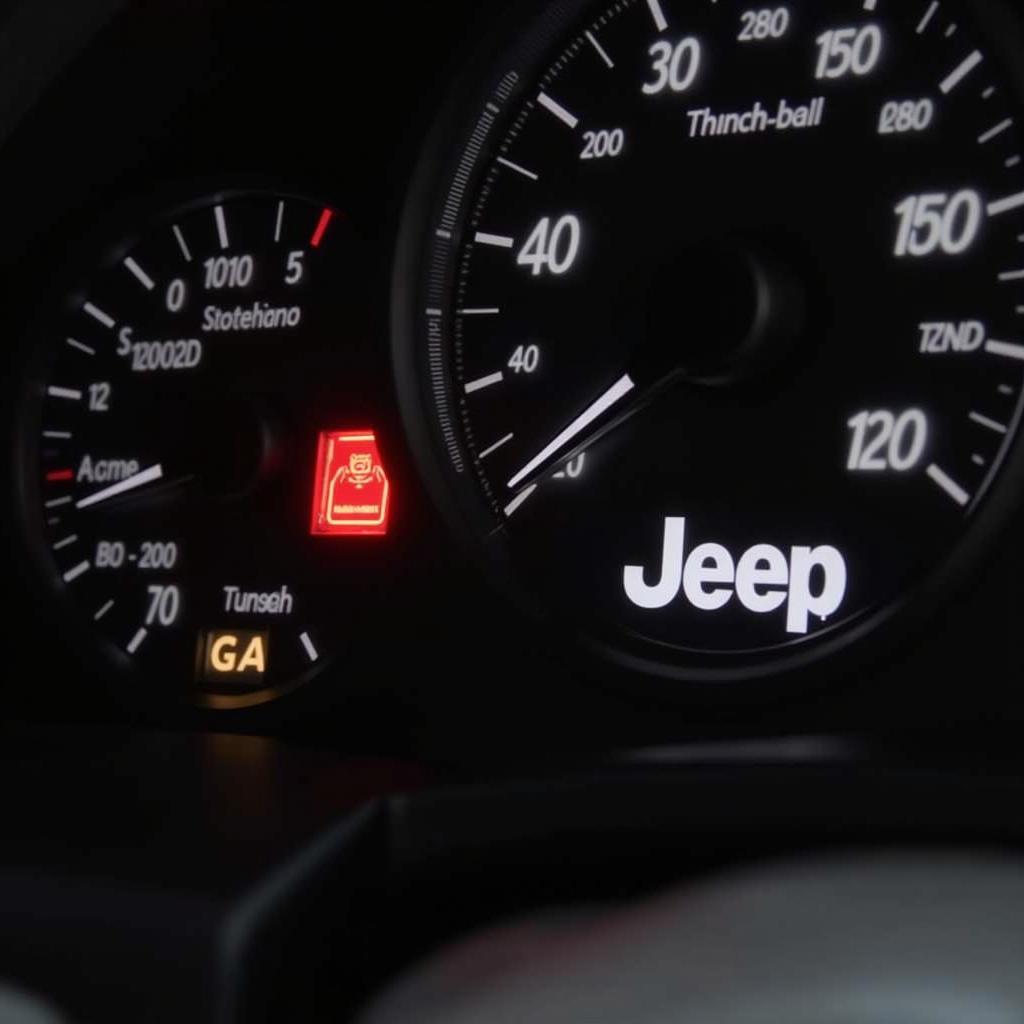A flashing brake warning light on your Subaru dashboard is a clear sign that something is wrong with your braking system and requires immediate attention. Ignoring this warning could lead to reduced braking performance and potentially dangerous driving situations. This comprehensive guide will walk you through the common causes of a flashing brake warning light in Subaru vehicles and provide practical solutions to help you resolve the issue.
Understanding Your Subaru’s Brake Warning System
Subaru vehicles are equipped with a sophisticated electronic brake system designed to ensure optimal braking performance and safety. The brake warning light on your dashboard plays a crucial role in this system. It illuminates when the system detects an abnormality, alerting you to potential issues.
A flashing brake warning light typically indicates one or more of the following:
- Low Brake Fluid Level: This is the most common cause of a flashing brake light. Brake fluid is essential for transmitting force from the brake pedal to the wheels. A leak or significantly worn brake pads can lead to low brake fluid levels.
- Faulty Brake Light Switch: The brake light switch activates the brake lights when you press the brake pedal. A malfunctioning switch can disrupt the brake warning system, causing the light to flash.
- ABS (Anti-lock Braking System) Issue: Your Subaru’s ABS prevents wheel lockup during hard braking, maintaining steering control. A problem with the ABS module, wheel speed sensors, or wiring can trigger the flashing brake light.
- Electronic Parking Brake (EPB) Malfunction: Some Subaru models feature an electronic parking brake. If there’s a fault within the EPB system, such as a faulty switch or motor, it can trigger the brake warning light.
Diagnosing the Problem
Before attempting any repairs, it’s crucial to diagnose the cause of the flashing brake light. Here’s a step-by-step guide:
- Check Brake Fluid Level: Park your Subaru on a level surface and turn off the engine. Locate the brake fluid reservoir under the hood (refer to your owner’s manual if unsure). Carefully remove the cap and check the fluid level. It should be between the “MIN” and “MAX” marks.
- Inspect for Leaks: If the brake fluid level is low, carefully examine the brake lines, calipers, and wheel cylinders for any signs of leaks. Look for wet spots or drips around these components.
- Inspect Brake Lights: Have a friend press the brake pedal while you check if all brake lights are working correctly. If one or more lights are out, it could indicate a faulty brake light switch.
- Scan for Trouble Codes: If the brake fluid level is adequate and there are no visible leaks or brake light issues, it’s advisable to scan your Subaru’s computer for diagnostic trouble codes (DTCs). These codes can provide valuable insights into the specific problem with the braking system. You can use an OBD-II scanner or take your car to a qualified mechanic.
Fixing the Issue
The solution to a flashing brake warning light depends on the underlying cause. Here are some common fixes:
- Adding Brake Fluid: If the brake fluid level is low but there are no leaks, carefully top it off with the recommended brake fluid type specified in your owner’s manual. Avoid overfilling the reservoir.
- Repairing Brake Fluid Leaks: If you detect a brake fluid leak, it’s crucial to address it immediately. Repairing brake lines or replacing leaking components typically requires professional expertise.
- Replacing the Brake Light Switch: Replacing a faulty brake light switch is a relatively straightforward procedure. You can find instructions in your owner’s manual or online resources.
- Addressing ABS Issues: Resolving ABS problems often involves inspecting and replacing faulty wheel speed sensors, ABS modules, or related wiring. This is best left to qualified mechanics with specialized diagnostic equipment.
- Repairing EPB Malfunctions: If your Subaru’s electronic parking brake is malfunctioning, it’s recommended to have it diagnosed and repaired by a qualified technician.
When to Seek Professional Help
While some causes of a flashing brake warning light can be addressed with basic DIY maintenance, it’s crucial to seek professional help in the following situations:
- You’re uncomfortable working on your car’s braking system.
- You suspect a serious issue with the ABS or EPB system.
- You’re unable to diagnose the problem yourself.
Attempting to repair complex braking system issues without proper knowledge and equipment can be dangerous and lead to further damage.
Preventing Future Issues
Regular maintenance plays a vital role in preventing brake problems and ensuring your Subaru’s braking system operates flawlessly:
- Regular Brake Fluid Checks and Changes: Check your brake fluid level regularly and have it flushed and replaced according to your Subaru’s recommended maintenance schedule.
- Brake Pad Inspections: Inspect your brake pads during regular maintenance or if you notice any unusual noises or vibrations while braking.
- Timely Repairs: Address any brake-related issues promptly to prevent further damage and ensure your safety on the road.
Conclusion
A flashing brake warning light in your Subaru is a serious matter that should never be ignored. By understanding the potential causes, following the diagnostic steps outlined in this guide, and seeking professional help when needed, you can ensure your Subaru’s braking system remains in optimal condition, providing you with peace of mind and a safe driving experience.



